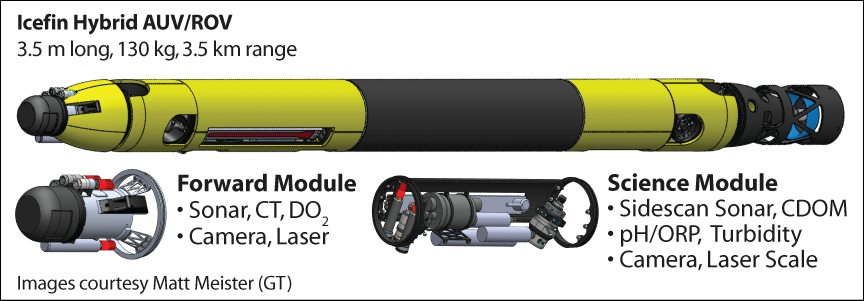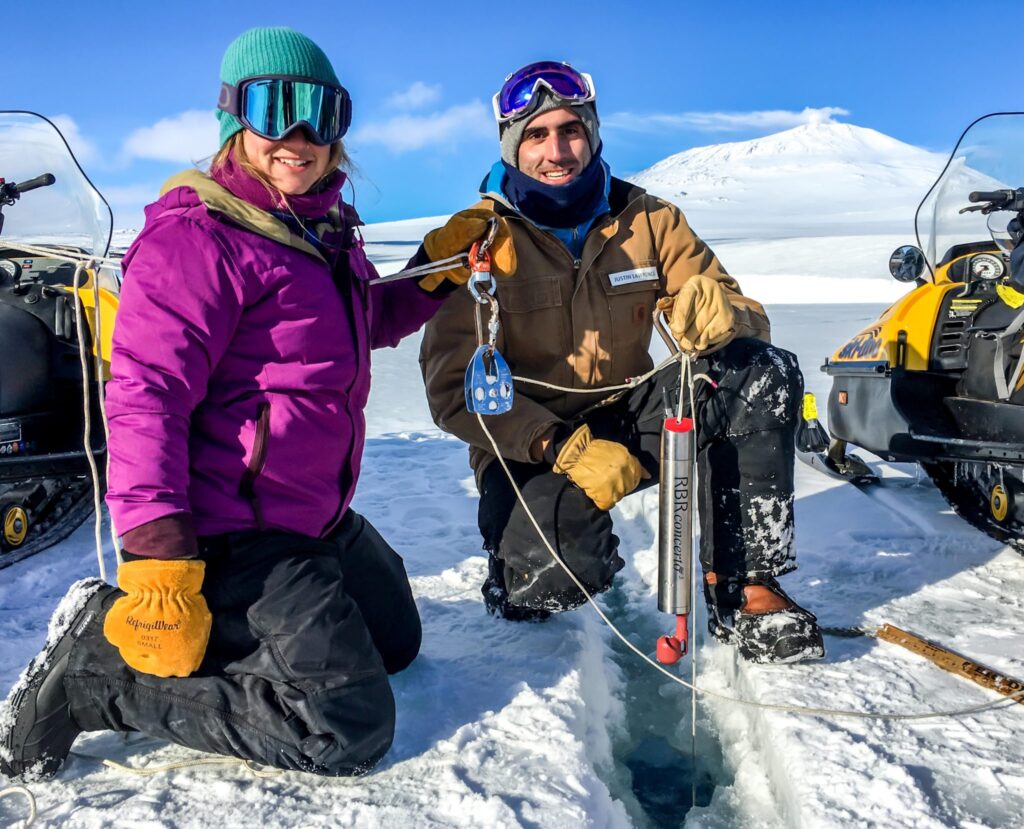Since 2014, a group of researchers from the Georgia Institute of Technology (GIT) have been working in Antarctica to develop the underwater vehicle called the Icefin. Funded by NASA through the RISE UP (Ross Ice Shelf and Europa Underwater Probe) grant, the Icefin has been developed to study the under ice conditions on Jupiter’s moon Europa.
The GIT team are using the RBRconcerto³ C.T.D|fast32|deep in Antarctica around McMurdo Sound to profile the water column and map the various water masses that interact with ice and distribute nutrients. The researchers are very interested in how the temperature and salinity trends drive melting of ice at depth and re-accumulation of ice in shallower waters. It is challenging to make measurements in waters below the freezing point, but the design and quality of the RBRconcerto³ C.T.D helps enable these measurements. This kind of basal ice flux is something that is likely occurring below Europa’s ice shell, so these dynamics are critical to understanding better.

The flexibility of the RBRconcerto³ C.T.D|fast32|deep also allows the team to mount the CTD on Icefin, which a great way to check the sensors on the vehicle and get excellent quality water column data under thicker ice where they can’t drill an opening through the ice for vertical profiling.
GIT PhD student Justin Lawrence says “what we love about RBR (in addition to how great it is to work with you all) is the low size, power, robustness and fast response time of the sensors. When considering CTDs for polar work it’s hard to use pumped cells because of the risk of freezing, and we also need something that’s small and fast enough to work well on a moving platform that has to fit through 30 cm holes in the ice. The RBRconcerto³ loggers are absolute workhorses and we see a lot of people starting to use them more and more. The ability to integrate them into the vehicle is a big plus as well and makes them very flexible.”
The 2019 field season is the last season with the current NASA grant. However, the researchers have received more funding with New Zealand collaborators to return to Antarctica the following year. Next year they’ll be deploying the Icefin beneath the Ross Ice Shelf with Christina Hulbe’s (Otago University, New Zealand) Ross Ice Shelf Project, and under Thwaites Glacier as part of David Holland (New York University) and Keith Nicholl’s (British Antarctic Survey) MELT (Melting at Thwaites Grounding Zone and Its Control on Sea Level) project and the International Thwaites Glacier Consortium, which is a joint US National Science Foundation and UK Natural Environmental Research Council project.
